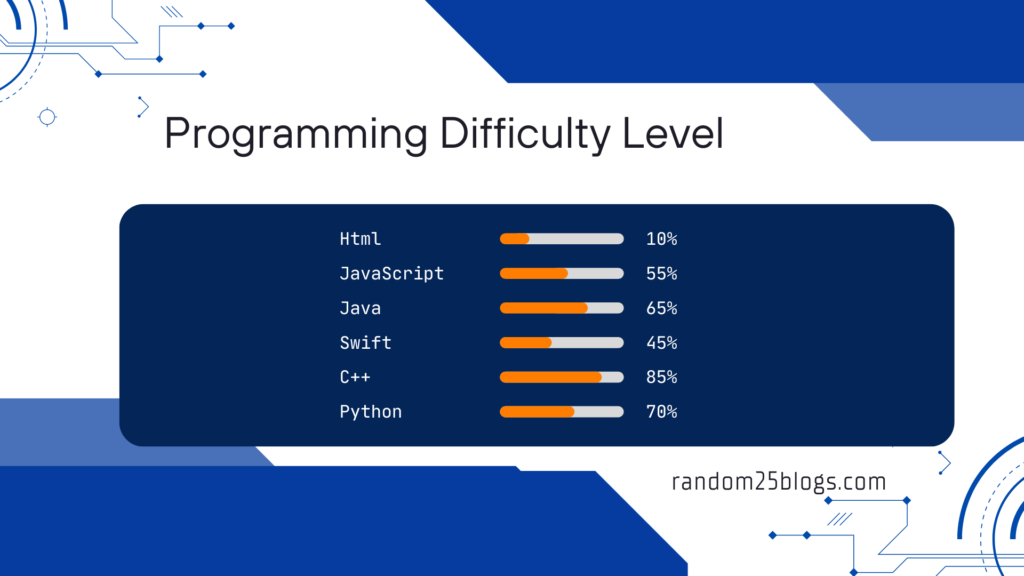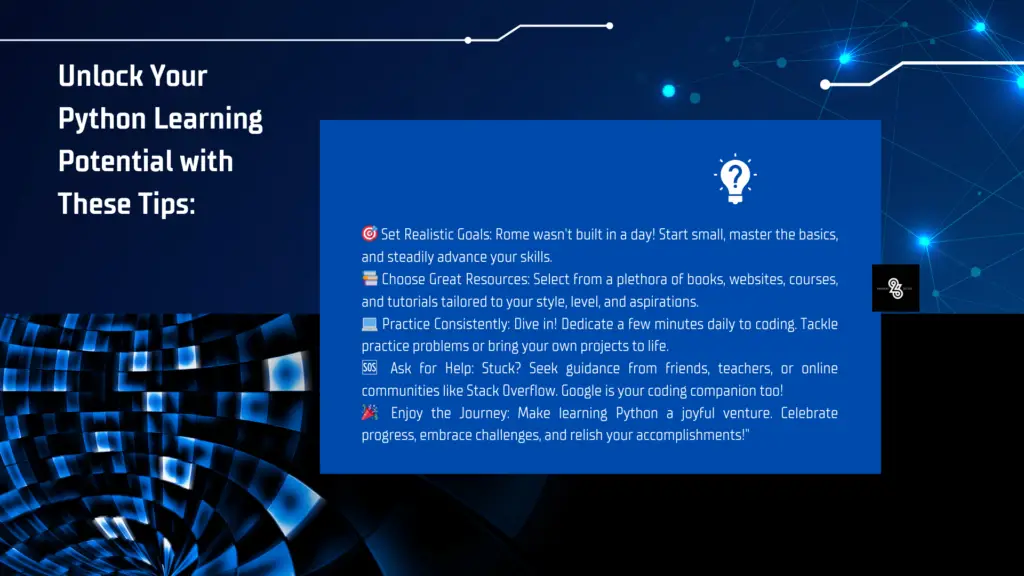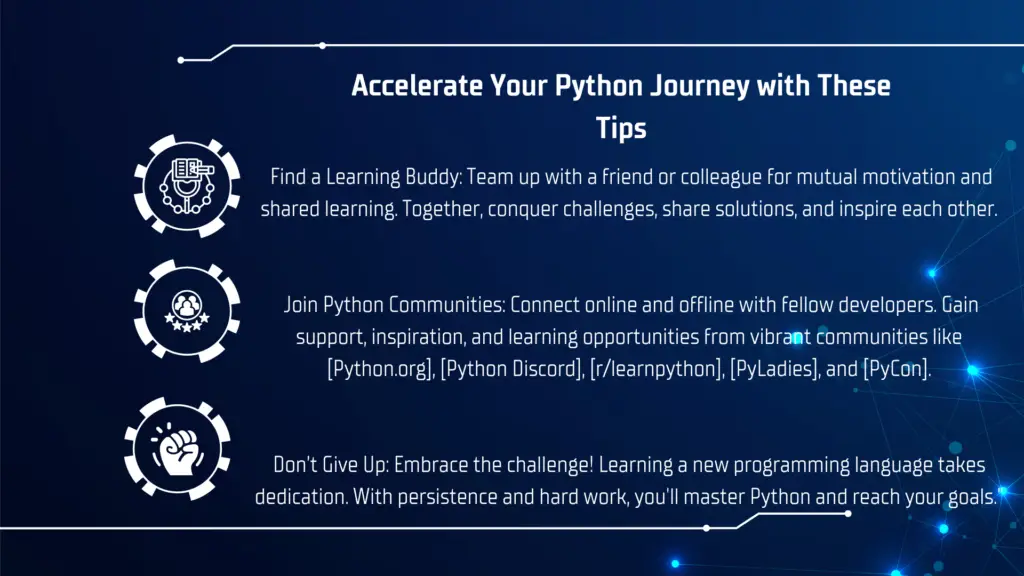
Python is one of the most popular and versatile programming languages in the world. It is easy to learn, read, and write. It can be used for many different purposes, such as data science, machine learning, web development, and more.
If you are new to programming or want to learn Python, you may be wondering how to get started. In this blog post, I will share with you some tips and a step-by-step guide on how to start learning Python.
Table of Contents
Why Learn Python?
Python is a great programming language for beginners because:
- It has a simple and clear syntax that makes it easy to read and write code.
- It has a large and active community that provides many resources and support for learners.
- It has a rich set of libraries and frameworks that can help you accomplish various tasks and projects.
- It is widely used in many fields and industries, such as data science, machine learning, web development, and more.
Learning Python can help you develop your logical thinking, problem-solving, and creativity skills. It can also open up many opportunities for your career and personal growth.

Tips for Learning Python
Here are some tips that can help you learn Python effectively:
- Set realistic goals. Don’t try to learn everything about Python at once. Start with the basics and gradually build your knowledge and skills.
- Find a good learning resource. There are many books, websites, courses, and tutorials that can help you learn Python. Choose a resource that suits your learning style, level, and goals.
- Practice regularly. The best way to learn Python is by doing. Try to write code every day, even if it’s just for a few minutes. You can find practice problems online or create your own projects.
- Don’t be afraid to ask for help. If you get stuck or have doubts, don’t hesitate to ask for help from a friend, teacher, or online forum. You can also use online tools such as Stack Overflow or Google to find answers to your questions.
- Have fun. Learning Python should be enjoyable and rewarding. Don’t be too hard on yourself or give up easily. Celebrate your progress and achievements.
Step-by-Step Guide for Learning Python
Here is a step-by-step guide on how to start learning Python:
- Install Python. The first step is to install Python on your computer. You can download the latest version of Python from the [official website]. Follow the instructions on how to install it on your operating system.
- Learn the basics. Once you have Python installed, you can start learning the basics of the language. You can use the [official Python tutorial] or the book [Learn Python the Hard Way] as a guide. You will learn about the basic concepts, syntax, data types, operators, control structures, functions, modules, and more.
- Start practicing. The best way to learn Python is by practicing. Try to write code every day, even if it’s just for a few minutes. You can use online platforms such as [Codecademy], [HackerRank], or [Codewars] to find practice problems or challenges. You can also create your own projects based on your interests or hobbies.
- Contribute to open source projects. A great way to learn Python and gain experience is to contribute to open source projects. Open source projects are software projects that are publicly available and anyone can contribute to them. There are many open source projects that need help from Python developers. You can use platforms such as [GitHub] or [GitLab] to find open source projects that interest you.
- Take online courses. There are many online courses that can help you learn Python in-depth or specialize in a specific field or topic. These courses can be a great way to learn new concepts, techniques, tools, and frameworks. You can also get feedback on your code from instructors or peers. Some of the popular online courses for learning Python are:
- [Python for Everybody Specialization] by University of Michigan on Coursera
- [Introduction to Computer Science and Programming Using Python] by MIT on edX
- [Python for Data Science and Machine Learning Bootcamp] by Jose Portilla on Udemy
- [Machine Learning with Python] by IBM on Coursera
- [Python and Django Full Stack Web Developer Bootcamp] by Jose Portilla on Udemy
- Attend meetups and conferences. There are many Python meetups and conferences held around the world. These events are a great way to meet other Python developers, learn from their experiences, and discover the latest trends and innovations in the language. You can use platforms such as [Meetup] or [Eventbrite] to find Python events near you.

Additional Tips for Learning Python
Here are some additional tips that can help you learn Python faster and better:
- Find a learning buddy. Learning with a friend or colleague can be a great way to stay motivated and learn from each other. You can share your goals, challenges, solutions, and feedback with each other.
- Join a Python community. There are many online and offline communities where you can connect with other Python developers. These communities can be a great source of support, inspiration, and learning opportunities. Some of the popular Python communities are:
- [Python.org Community]
- [Python Discord]
- [r/learnpython] on Reddit
- [PyLadies]
- [PyCon]
- Don’t give up. Learning a new programming language can be challenging, but it’s important to persevere. With hard work and dedication, you can learn Python and achieve your goals.

Learning Python can be a great way to get started in programming or enhance your existing skills. Python is a simple, readable, and versatile language that can be used for many different purposes and projects.
In this blog post, I have shared with you some tips and a step-by-step guide on how to start learning Python. I hope this blog post has helped you to learn how to start learning Python step by step. If you have any questions or feedback, please feel free to leave a comment below.
Happy coding! 🐍







Your article helped me a lot, is there any more related content? Thanks!